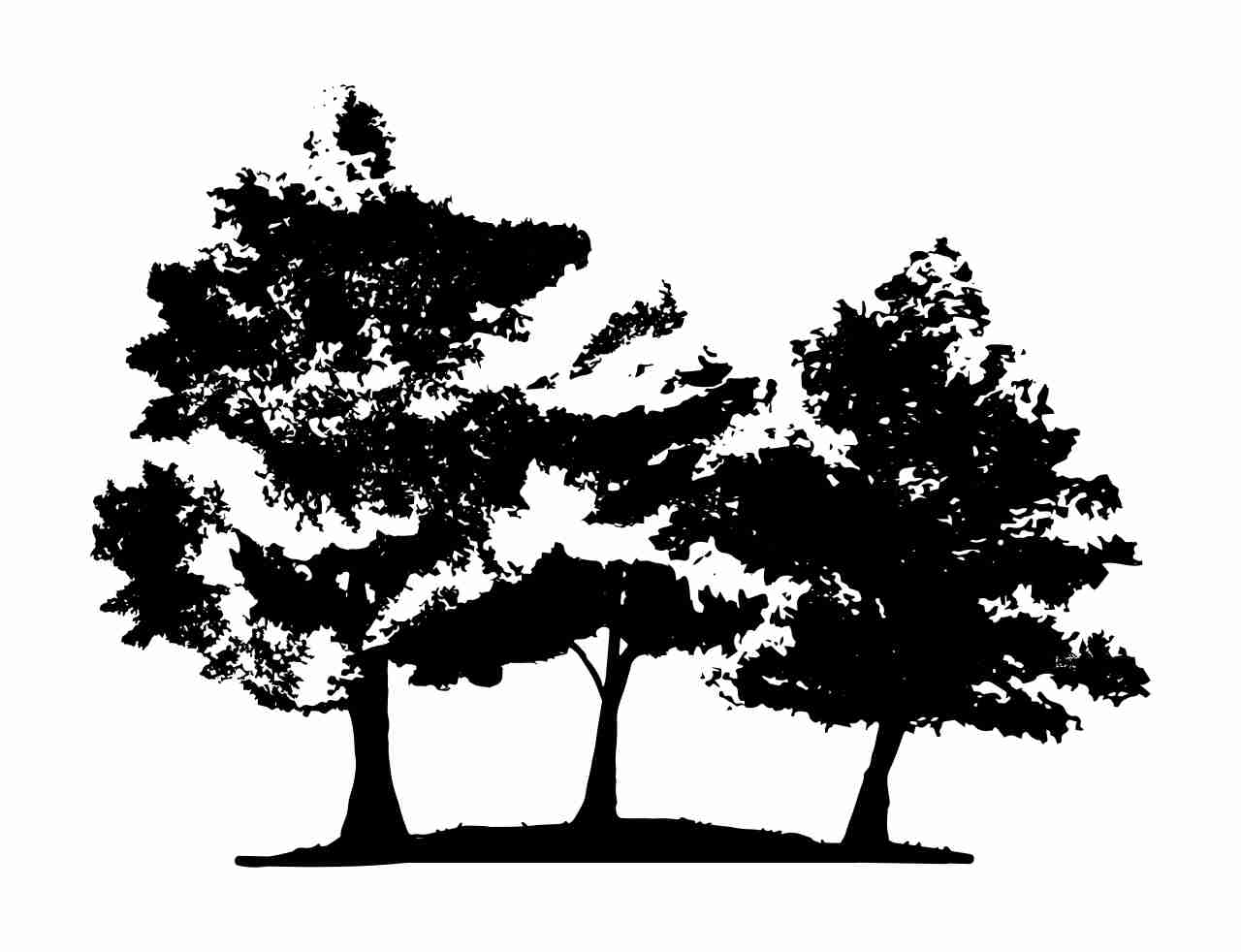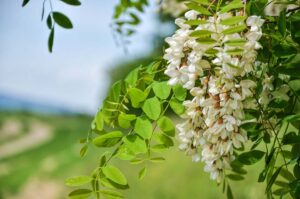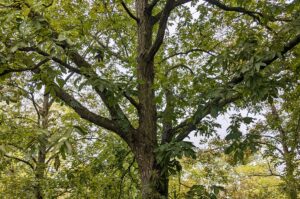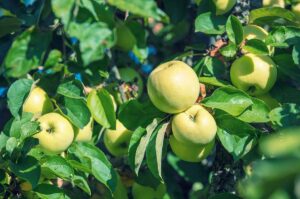
Agroforestry
Agroforestry integrates trees into the landscape to increase agricultural productivity, enhance biodiversity, support ecosystem services, and create natural resilience. Agriculture is a major source of pollution and destruction of natural habitat, and contributes 10% of all greenhouse gases in the United States. The vast majority stems from continuous soil tillage, synthetic fertilizers, and concentrated livestock feedlots. Agroforestry practices can reverse these trends and turn agriculture into a source of ecological health and a net carbon sink. This translates into more nutritious food, animal fodder, bioenergy, and natural fibers, in balance with the surrounding ecosystem. Agroforestry also protects the land from volatile and unpredictable weather by retaining water runoff, reducing soil erosion, and increasing beneficial insects and soil microbial life.
Orchards & Tree Crops
Creating Diverse Food Forests
One of the most common agroforestry practices is planting a diversity of tree crops, including nuts, fruits, timber, and forage. This includes orchards dedicated to single crops like apples, or multi-species plantings that emulate forested landscapes. We assist farmers and landowners in designing diversified perennial systems which produce an abundance of high caloric crops – often with greater yield, fewer inputs, and less ecological disturbance and greater climate benefits than annual cropping systems.


Silvopasture
Combining Trees, Pasture, and Livestock
Silvopasture is the integration of trees and livestock pasture through tree planting in and around existing fields or by introducing livestock to an existing wooded area in a way that benefits the trees and the animals. The livestock are grazed between trees to maintain optimal understory vegetation. The trees provide valuable shade during extreme heat events and other sources of fodder throughout the season. The livestock can forage on the excess fruits, nuts, and leaf fodder from the trees while fertilizing the roots with nutrient dense manure. When properly designed and implemented, silvopasture systems add biodiversity to farms and enhance animal welfare. Tree species and inter-species genetics as well as the proper number of livestock are crucial to a successful silvopasture design. Understanding of the appropriate way to combine trees and livestock requires a deep knowledge of animal husbandry as well as horticulture.
Windbreaks & Edible Hedgerows
Sheltering Soil and Supporting Livestock Health
Windbreaks are valuable for cultivated open lands and pasture. Disturbed soils are highly erodible from the forces of wind. Hedge rows of trees slow down the wind velocity and limit the disturbance of the soil until crops are established. Windbreaks can also serve as shade and shelter for livestock. Windbreaks can act as important wildlife habitats and corridors through open fields. Properly designing these windbreaks with a diversity of trees is critical to the proper function of this agroforestry system.
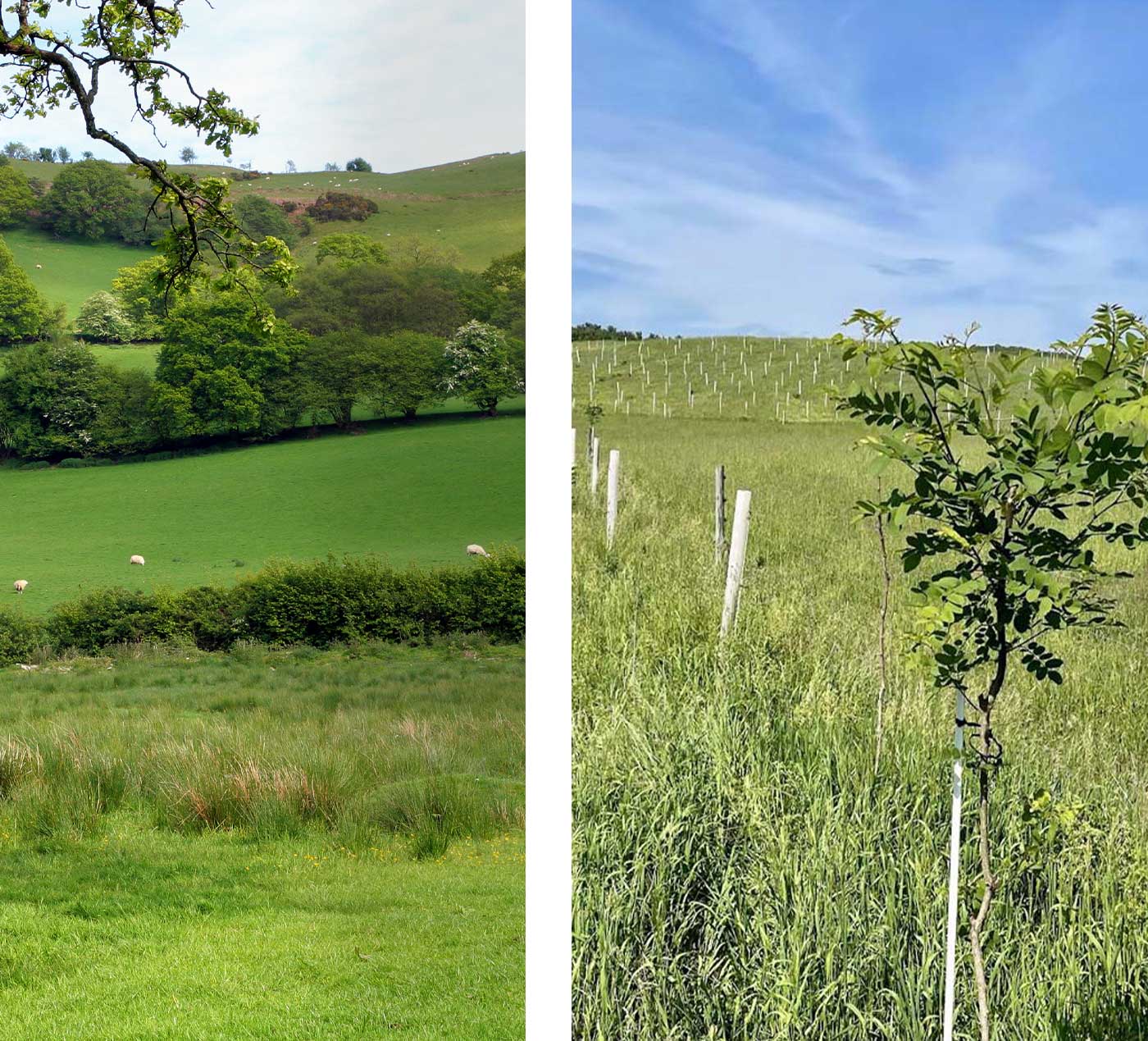
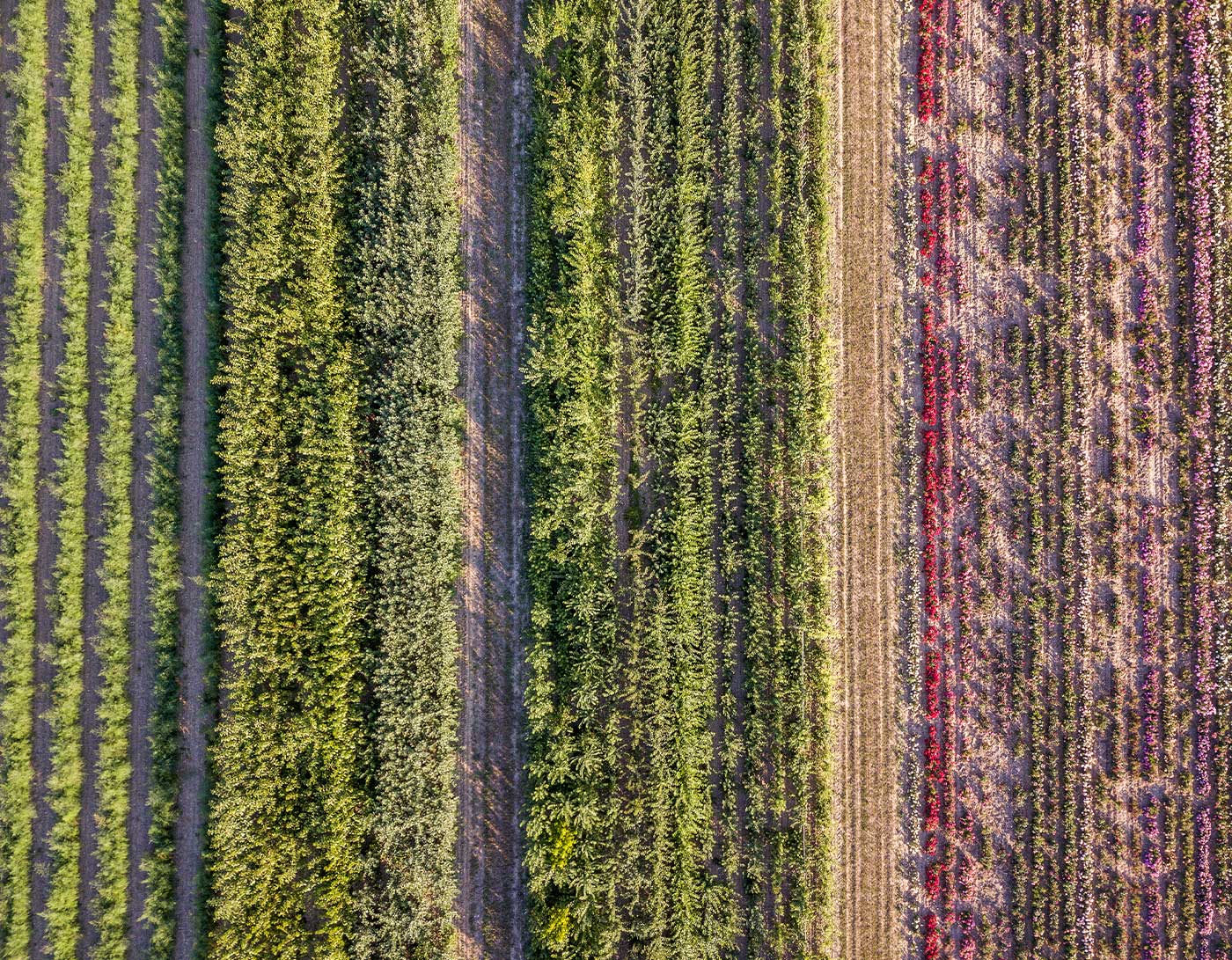
Alley Cropping
Transitioning from Annuals or Hay to Perennial Crops
Alley cropping integrates trees alongside annual crops or perennial hay fields. “Alley” refers to the linear design of rows of annual crops and then a row of tree crops. When properly implemented, alley cropping systems provide farms with economically-viable means of transitioning to perennial agriculture. Once the trees have reached productive maturity or have completely shaded out the annual field crops the land has fully transformed into a perennial agriculture system.

